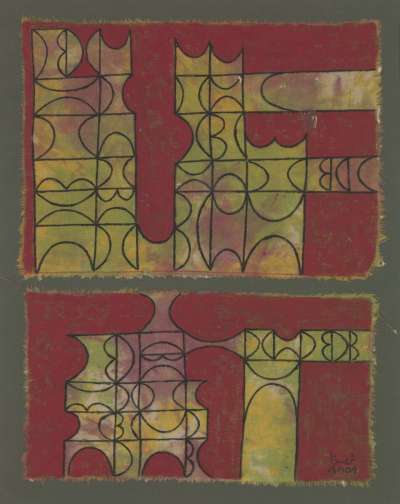(14/7/1928 - 18/1/1985)
Anwar Jalal Shemza was born in Simla, India, to Kashmiri and Punjabi parents. An established artist in Pakistan before his move to the UK in the mid-1950s, Shemza was an active participant in Urdu literary circles, publishing multiple novels, poems and radio plays, and editing the journal Ehsas. In 1952, he co-founded the Lahore Art Circle, a group of young artists interested in modernism and abstraction. In 1956, he relocated to London to study at the Slade School of Fine Art. There, he was astonished to hear one of his lecturers, famed art historian E. H. Gombrich, characterise Islamic art as purely functional. This was a pivotal moment, leading Shemza to abandon previous work and embark on a journey to create a dramatically different style and visual language. Throughout his career, Shemza drew on an array of influences , from carpet patterns and calligraphic forms to the environments around him, from Mughal architecture to the rural landscapes of Staffordshire, England, where he eventually settled. Shemza continued to make and exhibit art until his death in 1985. Shemza’s work is in the collections of The Metropolitan Museum of Art, New York; Tate, London; Ashmolean Museum, Oxford; Guggenheim, Abu Dhabi, United Arab Emirates; Lahore Museum, Pakistan; Sharjah Art Foundation, United Arab Emirates; and Minneapolis Institute of Art, USA.
